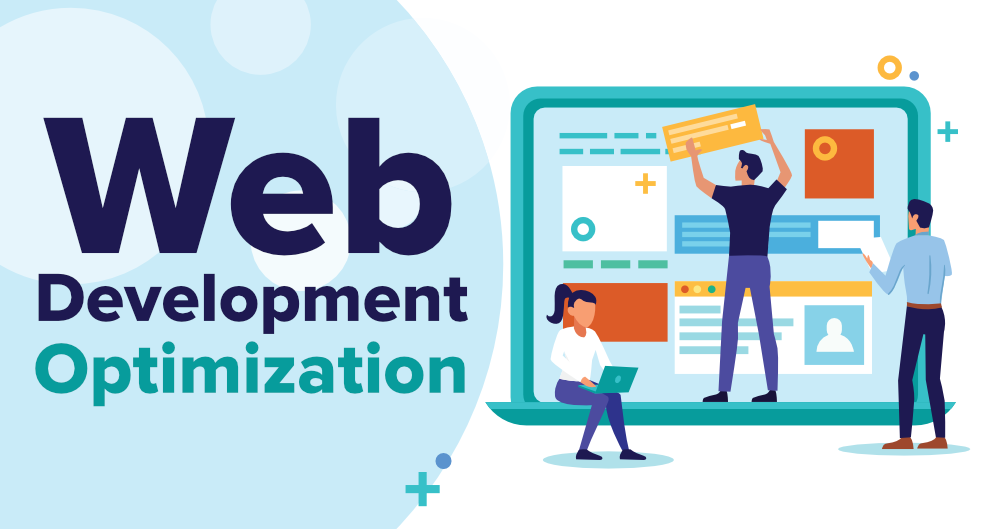Website performance is essential for drawing and keeping users in today’s competitive digital environment. High bounce rates, a bad user experience, and eventually lost business prospects are all consequences of a slow and unresponsive website. The term “web performance optimization” (WPO) refers to a collection of tactics and methods used to enhance the responsiveness, speed, and overall functionality of websites. This article will examine numerous WPO techniques that can aid in the development of quicker and more streamlined websites. You may improve user satisfaction, boost conversion rates, and gain a competitive edge in the online market by putting these strategies into practice.
What is website optimization?
Increasing your website’s performance across several metrics, including online traffic, conversion rates, and usability, is known as website optimization. While several KPIs and goals can be used to measure the success of your optimization efforts, the ultimate purpose of website optimization is to ensure your website offers a seamless digital experience. By doing this, the ideal environment is created for website visitors to develop into pleased, loyal clients.
It requires consistency and effort to manage and maintain a website so that it functions properly and has engaging content. It is advisable to divide this task into many areas of website optimization because it can feel like a gigantic task, especially if your company has several huge, complex websites.
Benefits of optimizing websites
- Improve brand experience and reputation: By providing regular, user-centered interactions on your website, you also raise the profile of your brand. Since your website serves as an extension of your brand, happy visitors can become devoted supporters of your business.
- Boost sales through conversions: Increased traffic also increases the likelihood that prospective leads will become paying clients. Additionally, you may build a top-notch experience that will nurture leads and consumers by optimizing the quality of your content.
- Increase traffic: Technical SEO and content optimization for your website make it simpler for users to discover your material naturally through search engines.
- Web accessibility compliance: The number of lawsuits involving the Americans with Disabilities Act increased by 23% in the United States. With regular accessibility audits, you can protect your website from future legal problems associated with web accessibility.
What Affects Site Speed
Your site’s load time may be slow for a variety of reasons. Anything could be the cause, but these are the most typical ones:
In the fast-paced digital landscape, a website’s performance plays a crucial role in shaping user experiences. Several factors contribute to the efficiency and speed of a website, and careful consideration of elements like JavaScript, CSS, server strategy, image size, caching, plugins, and more is vital to ensuring optimal performance. In this article, we’ll explore common pitfalls and best practices to enhance website speed and responsiveness.
JavaScript and CSS Optimization
JavaScript and CSS are essential components of web development, but inefficient use can significantly impact a site’s speed. Minifying and compressing these files, reducing unnecessary code, and employing asynchronous loading can streamline the rendering process, resulting in faster load times.
Server and Hosting Strategy
A poor server or hosting strategy can lead to sluggish website performance. Opting for reliable hosting services with sufficient bandwidth and server resources is crucial. Additionally, utilizing Content Delivery Networks (CDNs) can distribute content geographically, reducing latency and accelerating loading times.
Image Size and Compression
Large image files can be a major bottleneck for website speed. Compressing images without compromising quality, using modern image formats, and implementing responsive image techniques can significantly reduce page load times.
Browser Caching
Failure to implement browser caching means that users must download the same resources each time they visit a page. Leveraging browser caching allows frequently accessed elements to be stored locally, reducing load times for returning visitors.
Plugin and Widget Overload
While plugins and widgets can enhance website functionality, an excess of these elements can weigh down a site. Regularly assess and optimize the use of plugins, prioritizing those that are essential for the user experience.
Hotlinking Prevention
Hotlinking, or embedding resources from external servers, can result in slow loading times if the linked server is sluggish. Implementing measures to prevent hotlinking or using more reliable servers for external resources can mitigate this issue.
Accounting for Traffic Volume
Websites experiencing high volumes of traffic must scale their infrastructure accordingly. This includes optimizing database queries, utilizing load balancing, and employing effective caching mechanisms to ensure smooth performance even during traffic spikes.
Compatibility with Older Browsers
While modern browsers are optimized for speed, catering to users with older browser versions is essential. Streamlining code and using progressive enhancement techniques can ensure a consistent and satisfactory experience for users on older browser versions.
Mobile Optimization
With the rise of mobile devices, catering to users with slow network connections is paramount. Employ techniques such as responsive design, image optimization, and lazy loading to enhance the mobile user experience.
In the dynamic world of web development, optimizing website performance is an ongoing process. By addressing issues related to JavaScript, CSS, server strategy, image size, caching, plugins, hotlinking, traffic volume, browser compatibility, and mobile optimization, web developers can create a seamless and efficient user experience, fostering user satisfaction and engagement.
Speeding up a website:
- Cutting Down on HTTP Requests
- Making Use of Caching
- Content Distribution Networks
- File Compression
- Minifying JavaScript and CSS
- Images and videos that load slowly
- Putting Browser Caching in Place
Increasing Front-End Performance:
- Image Optimization.
- Utilizing Effective CSS.
- Performance optimization for JavaScript.
- Putting Above-the-Fold Content First.
- Mobile optimization and responsive web design.
- Critical Path Rendering implementation.
- Using third-party scripts and plugins as little as possible.
Optimizing backend performance:
- Optimizing databases.
- Caching on the server.
- CDNs, or content delivery networks.
- Scaling and load balancing.
- reduce database queries.
- Enhancing API Calls
- It is rendering on the client side vs the server side.
Web efficiency and SEO:
- Mobile-Friendly Ranking Factors.
- Fundamentals of the Web.
- Rankings and site speed.
Best Practices for Optimizing Web Performance:
- Optimization is ongoing.
- Testing A/B.
- Budgeting for performance.
- working together as designers and developers.
- A user-focused strategy.
The importance of web performance optimization (WPO) in the creation of websites cannot be understated. This comprehensive guide’s methods and practices offer a road map for building quicker, more fluid websites, which ultimately improve customer satisfaction and propel corporate success.
You may significantly enhance your website’s performance by prioritizing website speed, utilizing caching and content delivery networks, compressing files, and improving front-end and back-end performance. Given the rising number of consumers accessing the web via mobile devices, mobile performance optimization is also essential.
You may also find areas for improvement and make data-driven decisions by monitoring and analyzing website performance using key performance indicators and performance testing tools. To maintain your website’s speed and responsiveness over time, effective strategies include continuous tuning, A/B testing, and performance budgeting.








